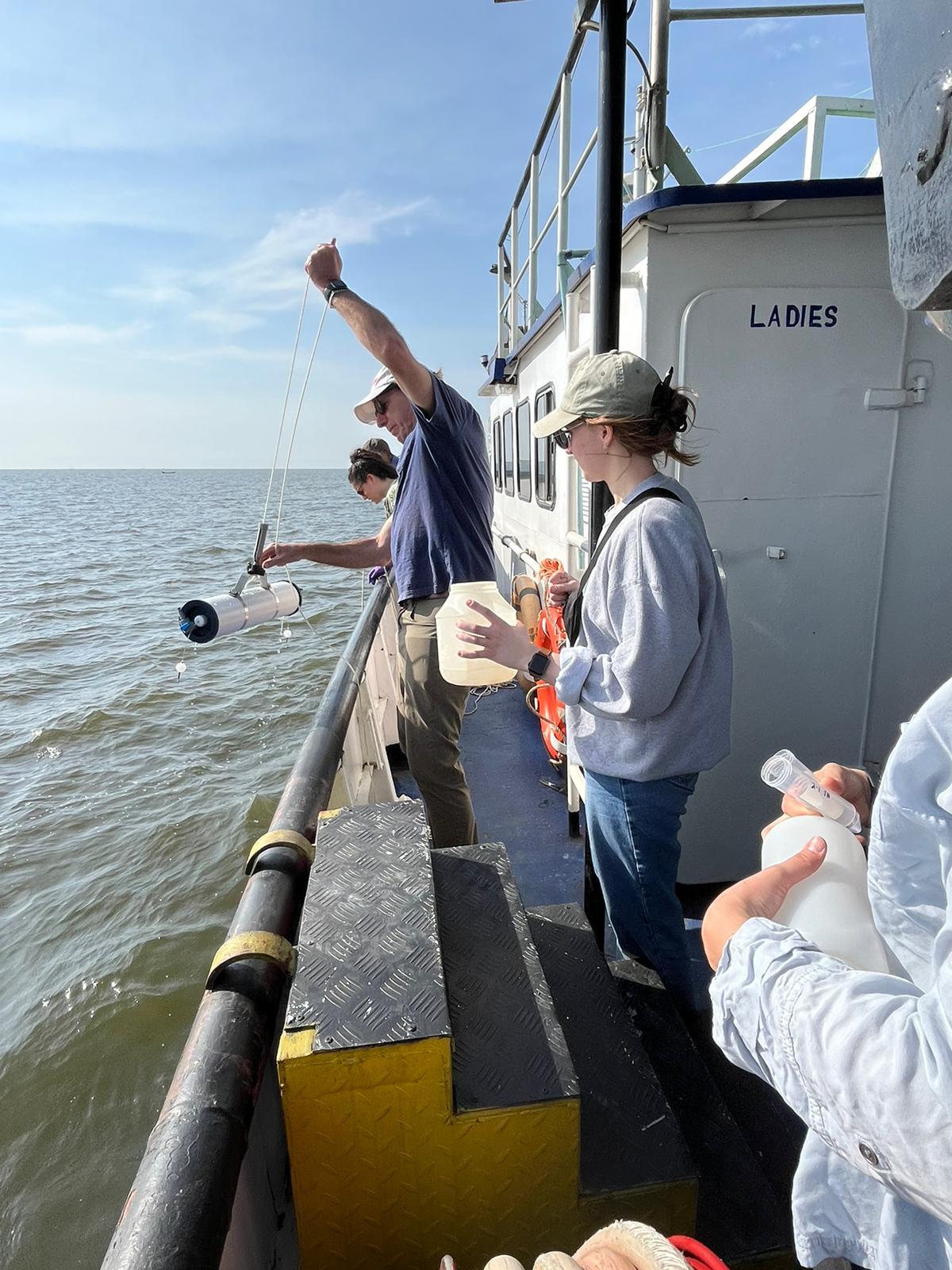A growing threat: BGSU researchers continue to detect dangerous levels of harmful algae in Africa's Lake Victoria
Estimated Reading Time: 4 minutes
Ongoing study in Kenya's Lake Victoria uncovers water quality below the World Health Organization's drinking standards

By Branden Ferguson
Building upon an ongoing international study to better understand harmful algal bloom formation, Bowling Green State University researchers recently led a third trip to Africa's Lake Victoria to analyze the freshwater lake and continue comparing results there with those in Lake Erie.
Traveling to Lake Victoria during different seasons, the research team took to the waters this time in February, a month when temperatures hover in the upper 70s. While the scientists expected to detect toxins once again, Dr. George Bullerjahn, BGSU emeritus professor of biology, said the results from this most recent trip were concerning.
“In the first year, we found genetic evidence that there should be cylindrospermopsin being made because we found the gene in all our data sets,” Bullerjahn said. “We came back in June 2023 and we could detect it, but it wasn’t very abundant. It was still a threat, but it was a threat that nobody was looking for. Then we went back this February for a quick two-day boat trip and we detected cylindrospermopsin of higher concentration than we did just eight months earlier."
Cylindrospermopsin is a toxin that is produced by a cyanbacterium thriving in lower light and doesn't always appear in traditional algae blooms. Toxic to liver and kidney tissue, the toxin does particularly well in the Winam Gulf with sediment-laden water flowing in from area rivers.
“We found that there were 1.3 parts per billion of cylindrospermopsin, which is roughly twice the drinking water standard of 0.7 parts per billion,” said Kate Brown, a BGSU doctoral student. “A lot of people rely on raw lake water as their source of water for drinking, bathing and other use. With a lack of resources and water infrastructure that is inconsistent and at times not present at all, residents are at risk of getting seriously ill.”
Brown and other students are part of the research team led by Bullerjahn and Dr. Kefa Otiso, BGSU professor of geography and service excellence. The group made their initial trip to Lake Victoria and the Winam Gulf in 2022 to profile the microbial community with a focus on cyanobacteria, underscoring the University's commitment to improving water quality globally.
With varying levels of cylindrospermopsin being found at different times of the year, and in various locations throughout the lake, the research team concluded that more research needs to be done. With an issue now uncovered, the team's focus is turning to solutions. However, Brown said that may not be as simple as it sounds.
“When we think about drinking water having more than one toxin, that can be tricky because one treatment doesn’t work for all of them, and one treatment could actually make it worse for another toxin,” she said.
While Lake Erie's algal blooms are not nearly as severe as what is being found in Africa, Bullerjahn said cylindrospermopsin-producing cyanobacteria could eventually fare well in the lake's open waters as the organisms grow best in warm water.
"We should be mindful to look for cylindrospermopsin in future decades as Lake Erie warms," Bullerjahn said. "It's important to continue our work in Lake Victoria as it may be a glimpse of what Lake Erie could look like in the future if bloom mitigation efforts are not taken seriously."
As the researchers continue to collect data and analyze their findings, Brown said the human and social aspect in Africa also needs to be addressed.
“That is where Dr. Otiso comes into play,” she said.
As a native Kenyan, Otiso has handled logistics and human interaction, talking to locals about the blooms and how they are affecting their villages and towns. After finding high levels of cylindrospermopsin, Otiso is now being leaned on to help communicate and educate the public about the potential dangers.
“Kenya is a country with very few resources, especially with respect to water treatment,” Bullerjahn said. “There has to be an effort to communicate the threats we are finding with the public and then figure out what to do about them. Dr. Otiso can help us determine the best way to communicate with the people living in the area.”
With cylindrospermopsin levels detected at roughly twice the drinking water standard, the BGSU research team looks to continue making trips to Lake Victoria and the Winam Gulf over the next few years.
"The most important thing about continuing the work in Africa is making sure the local population is aware of the threat of cyanotoxins," Bullerjahn said. "Most folks drink water directly from the lake, after a crude filtration step. They have no access to water treatment plants, so their protection from toxins is knowing when they are present so they can switch to another water source such as a river or bottled water."
Related Stories
Media Contact | Michael Bratton | mbratto@bgsu.edu | 419-372-6349
Updated: 07/31/2024 08:45AM




